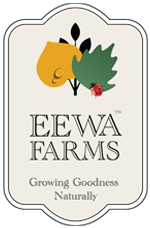Nurturing Nature: Troubleshooting and Enlightening Indoor Hydroponic Gardens
Nurturing Nature: Troubleshooting and Enlightening Indoor Hydroponic Gardens
In the gentle embrace of indoor hydroponic systems, where nature’s whispers guide the dance of life, occasional challenges may arise, but fear not, for solutions bloom like flowers in the morning sun. Let’s embark on a journey of problem-solving, tenderly nurturing our hydroponic systems back to radiant health.
Nutrient deficiencies, can subtly sap the vitality of our plants. According to research published in the Journal of Plant Nutrition, common deficiencies include nitrogen, potassium, and iron (Marschner, 2012). To remedy this, ensure your nutrient solution is well-balanced and replenish as needed. A dash of liquid fertilizer can breathe new life into weary leaves, restoring their vibrant hues.
pH imbalances, like a discordant melody in a symphony of growth, can disrupt the harmony of our hydroponic systems. Aim for a pH level between 5.5 and 6.5, as recommended by experts (Resh, 2013). Should your pH drift astray, gentle adjustments with pH-up or pH-down solutions can realign the celestial chorus, allowing your plants to thrive once more.
Pests, those unwelcome guests in our garden of tranquility, can wreak havoc if left unchecked. From aphids to spider mites to thrips, they lurk in the shadows, ready to feast upon tender shoots. Introduce beneficial insects like ladybugs or lacewings to the ecosystem, for they are nature’s guardians, keeping pests at bay (Daane et al., 2012). Additionally, neem oil or insecticidal soaps can offer effective, environmentally friendly control for these pesky intruders.
Now, let’s illuminate the path to success with light management for indoor hydroponic systems. Adequate light is essential for photosynthesis and healthy plant growth. LED grow lights are a popular choice for indoor gardens, offering energy efficiency and customizable spectrums tailored to plant needs. Position lights at the correct distance above plants to prevent burning or stretching, ensuring optimal light absorption.
Prevention, they say, is the best medicine, and so it is with indoor hydroponics. Regular maintenance, vigilant monitoring, and a touch of tender care can forestall many woes before they take root. Remember, dear gardener, in the gentle rhythms of nature lies the secret to a flourishing hydroponic paradise.
References:
Marschner, H. (2012). Mineral nutrition of higher plants. Academic Press.
Resh, H. M. (2013). Hydroponic food production: A definitive guidebook for the advanced home gardener and the commercial hydroponic grower (7th ed.). CRC Press.
Daane, K. M., Yokota, G. Y., Zheng, Y., Hagen, K. S., & Merrill, G. B. (2012). Classical biological control of olive scale, Parlatoria oleae, in California: a case study. Biological Control, 60(3), 279-286.

